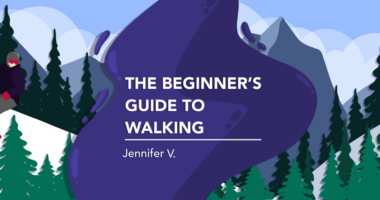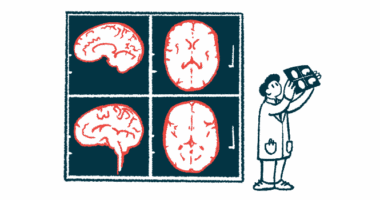Describing the Different Types of Pain I Experience as an NMO Patient

In my early 20s, I decided to drop everything and travel across Europe with my close friend Phil. Our trip was memorable for many reasons, including the fact that it was in Italy when I first felt unwell.
It was a hot summer, and 14 years ago, most of Europe did not have air conditioning. We walked to sightsee every day, so when my forearms began to ache and I found it difficult to lift anything, I thought I just had a bad sunburn.
Phil is a generous and attentive friend. He immediately jumped into action and found a farmacia. When he returned, we lathered a thick layer of aloe vera onto my arms, but I was still in pain. Phil carried my bag for the rest of that day, and then, just like magic, the pain went away. There was never any visible redness on my arms — just a nice, golden tan.
The following year, when I was diagnosed with neuromyelitis optica (NMO), I discovered that the burning sensation was a symptom of this brutal disorder and one of several types of pain I’d experience.
Pins and needles
I’ve now lived with NMO for almost 13 years. Over time, I’ve forgotten how to describe what my daily pain feels like, but it’s important for me to do so to raise awareness.
Along with the burning sensation, NMO patients can suffer from what is often called pins and needles. You know that feeling when your foot falls asleep, then you try to move it and it suddenly aches? Multiply that ache by 10, and that’s what it’s like for many NMO patients.
Pins and needles can occur in all extremities, and there’s no rhyme or reason as to when. For some, this sensation is triggered by sitting or lying down for an extended period. For others, it happens without warning.
‘I Am Iron (Wo)Man’
One awkward symptom of NMO is our core feeling heavy and foreign, like it’s filled with lead. When this sensation occurs, I imagine my body to be like a Lego figure. The core doesn’t move, but you can pop the legs, arms, and head in and out.
I sometimes question if I’d feel a punch to the stomach — that’s how foreign my core can feel. I’m not willing to test the theory, but when there is no sensation and I can’t feel temperature changes or movement, I wonder.
Bash-worthy
I’ve suffered from optic neuritis (ON), which can be another key indicator of NMO. The optic nerve swells, causing temporary or permanent vision loss. There’s technically no damage to the nerve, but the signal, or image, doesn’t make it all the way to the brain because of inflammation.
Not all NMO patients have had an ON attack; however, after talking with other patients, it seems to be a common occurrence. Once you’ve had an ON attack, you may become sensitive to light, quick movement, and even overuse.
During, before, or after an ON attack, patients often report mild to severe headaches. I’ve had headaches that lasted days. They can appear out of nowhere or indicate an upcoming episode.
The pain feels like I’ve spent hours standing beside a large speaker at a heavy metal concert. The ringing in the ears and the pain in the front of the head are enough to make anyone go crazy.
Being forthcoming about pain
When you suffer from an invisible disability, it can be frustrating to keep describing your pain. Some doctors use consistent check-in scales, like fist to five, to simplify how we feel. It helps build a benchmark for pain over time.
While I’d never recommend that patients focus on their pain, it’s important for us to be able to communicate our tough days so others can support us.
Note: Neuromyelitis News is strictly a news and information website about the disease. It does not provide medical advice, diagnosis, or treatment. This content is not intended to be a substitute for professional medical advice, diagnosis, or treatment. Always seek the advice of your physician or other qualified health providers with any questions you may have regarding a medical condition. Never disregard professional medical advice or delay in seeking it because of something you have read on this website. The opinions expressed in this column are not those of Neuromyelitis News or its parent company, Bionews, and are intended to spark discussion about issues pertaining to neuromyelitis optica spectrum disorder (NMOSD).






